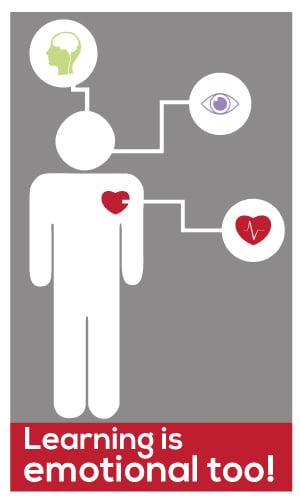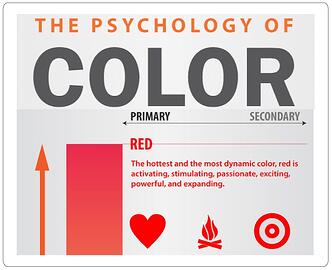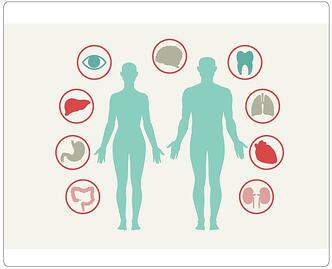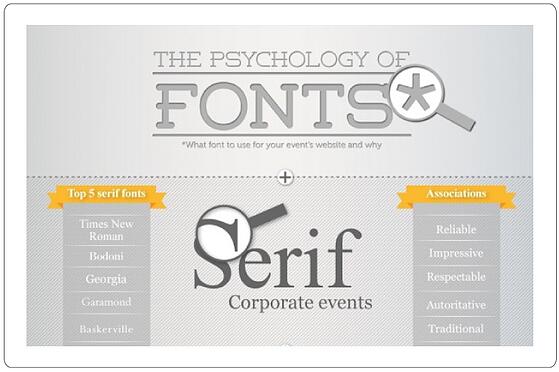 Learning isn’t merely cerebral. It’s emotional, too. Researchers, in fact, have confirmed how emotions affect mental processes. They finally found the missing piece of the learning puzzle and even encouraged instructional designers to include positive emotions as an important learning factor.
Learning isn’t merely cerebral. It’s emotional, too. Researchers, in fact, have confirmed how emotions affect mental processes. They finally found the missing piece of the learning puzzle and even encouraged instructional designers to include positive emotions as an important learning factor.
You don’t have to be an expert on the subject to see the benefits of projecting the right emotions among learners. It’s simple, really. Students learn if they care. They pay attention if they feel encouraged. They engage with others if they feel welcomed.
Emotions, therefore, are too entrenched in the learning processes that you can’t ignore them and pretend they’re not important. John Medina, in his book Brain Rules talks about the role of emotion on the human brain: "Emotionally charged events persist much longer in our memories and are recalled with greater accuracy than neutral memories."
So trigger the right emotion and use it to help students learn better and complete the eLearning course. Here’s how.
Use Good Typography
In the Aesthetics of Reading study, researchers found that good typography leads to good mood. In other words, good fonts made participants stay on cognitive tasks and not get distracted.
Typography, especially clean clear and simple fonts, projects certain emotions such as consistency, trust and confidence. For example, recent studies have revealed that people are more likely to believe a statement when it's written in Baskerville than when it was written in Computer Modern, Georgia, Helvetica, Trebuchet, or Comic Sans.
Fonts have human-like personalities too. In other words, the font's appearance gives off a certain mood. Comic book fonts create an aura of fun, while serif fonts like Times New Roman feel more traditional. Sans serif typefaces like Helvetica Neue, the one Apple uses for iOS 7, feel more modern.
Besides typography, consider the size and color of texts. These also affect the emotional and psychological response of your learners. For example, people have more of an emotional brain response to words in larger fonts than in smaller ones, according to the findings of a new study.
Check out The Psychology of Fonts — Infographic and The Complete Guide to Psychology of Fonts
Use the Right Color
 Choosing the right color is as important as choosing the right typeface. Every shade and stroke of color, or the lack of it, creates its own message. It can make people feel relaxed, happy, excited or discouraged.
Choosing the right color is as important as choosing the right typeface. Every shade and stroke of color, or the lack of it, creates its own message. It can make people feel relaxed, happy, excited or discouraged.
Warm colors like red, orange and yellow, usually evoke positive emotions such as optimism and happiness. But red can make people feel hungry (think of McDonald’s or KFC!). Not only that, studies found that exposure to red before the exam can negatively impact one’s performance. But it might be useful during athletic activities, since people react to it with greater speed and force.
The moral is to choose your colors wisely. People may react differently to the same color but it helps to consult studies on colors and carefully select them according to your goals. The right colors can help students improve their learning by as much as 75 percent, their participation by as much as 80 percent.
Check out thes helpful resources: The Psychology of Color for Web Designers and The Complete Guide to Colour Psychology
Use Powerful Images
 But that’s not all. Because powerful images evoke strong emotions, you have to be careful in selecting the right image to fuel a particular mood.
But that’s not all. Because powerful images evoke strong emotions, you have to be careful in selecting the right image to fuel a particular mood.
Take a picture with symmetrical elements, for instance. It creates a sense of order and predictability. The opposite image, one with asymmetrical elements, can evoke feelings of unrest and disorder.
What about close-ups and farther images? Close-ups evoke a very personal emotion, while images taken from a distance project isolation and loneliness.
Images, then, make people feel something about your content. They can either discourage or motivate them, distract them or help them focus. That’s why you have to criticize even the tiniest details of an image. Is it too small? Is it too flashy? Can the image really help get your point across or is there a better image available?
Additional tip: Images should be placed strategically, where they won't be ignored. That's because images will only deliver true value if your learners understand its importance in the course, if they are in the right context, next to the right conent.
Improve Your Copy
Copy or text is the easiest way to arouse specific emotions. That’s because words do help introduce a personality. It makes the author sound funny, serious, playful or hip. It shapes the feel of the course.
Easily digestible paragraphs written in a friendly tone, for instance, welcome learners and encourage them to finish the course. Lengthy ones filled with technical jargon bring out the opposite emotion.
Here are some overlooked ways to improve your copy:
- Carefully select words but, like a professional copywriter or astute marketer, err on the side of using emotionally-charged words. Using words that actually invoke a reaction is one of the easiest ways to trigger an emotion. Make sure to include some of these trigger words and get learners to care about the lessons: control, discovery, fun, self-achievement and helping others. Find as many trigger words as you can and include them. Start with a good thesaurus.
- Tell a story learners can emotionally relate to. Be sure to add a pinch of humor and write your story in a conversational or friendly tone. If storytelling isn’t your forte, you can always start a conversation and try to keep things light, simple and personal.










